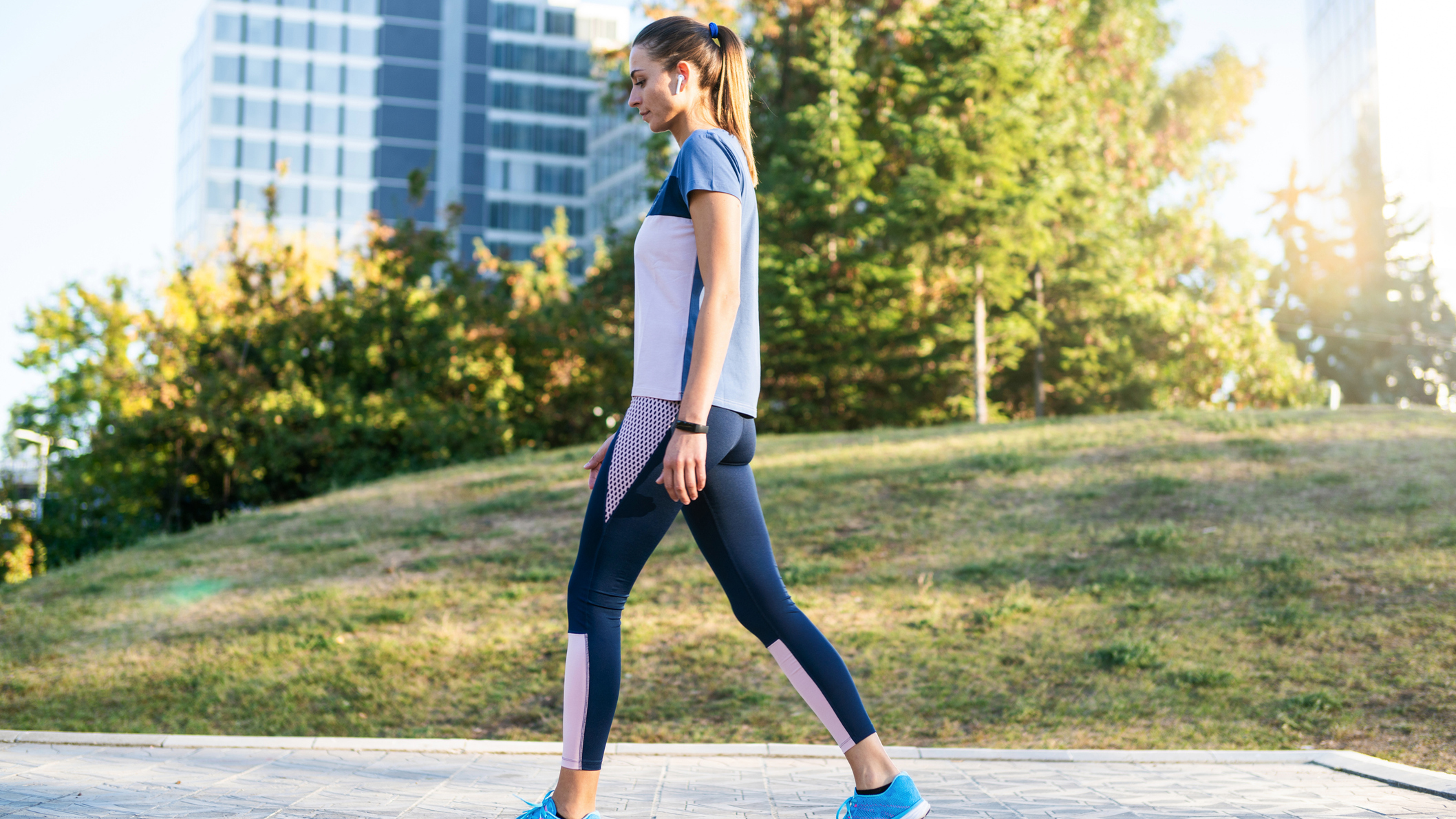
I’m a running nut. If I can get anywhere by running I'll do it.
If I’ve got chores to do I'll run to the shops. If my son is playing sport eight miles away I'll run there and back. If I'm on a city break I'll book a running sightseeing tour. I even run home after a night out with friends.
I’ve always found walking boring, slow and, in all honesty, a waste of time. Why walk when you can run and get an adrenaline rush at the same time, and cover the distance twice as fast?
But running can take its toll on the body, which I discovered after completing a 250km ultra-marathon this summer. I tried cutting back on running but by September my physiotherapist advised me to have a "proper rest". This meant no running.
This also happened to coincide with a change of routine at home, which meant I had to take on all dog-walking duties. So, I decided I’d have a month off and switch from running to walking.
How my routine changed
I originally got my dog Zippy to run with. He's a foxhound-trailhound, which means he needs a lot of exercise: on average a minimum of two hours a day. I was supposed to be racing with him in canicross events this fall, but my injury put a stop to this.
In my usual routine I run six days a week—anywhere from five to 20 hours across seven days. About a third of these runs are with Zippy. To rest my knee, but make sure that Zippy had adequate exercise, I needed to switch to 14 hours of walking instead.
This felt like a whole lot of walking for me, as someone who doesn't really enjoy doing it. But after trying it out for a month, I learned to embrace the occasional stroll. Here's everything I learned over those 30 days.
1. Walking made my day more efficient
I thought walking would be onerous and time-consuming because it’s much slower than running. However, it actually took up about the same amount of time in my week.
When the weather was warmer, walking actually saved me time. If I had been running—without the dog because it was too hot—then I would also have had to walk him later. I could also do simple chores during dog walks, like picking up my kids from school, which I couldn't have done when I was running.
2. I burned a good amount of calories and maintained my fitness
A two-hour run would usually burn around 800 calories, but I was surprised to discover a two-hour walk used around 400, which was more than I expected. Over a week I clocked up about 30-38 miles (50km to 60km), which was similar to my base running mileage.
When I did finally go for a 10km run at the end of the month, I was much slower but my aerobic fitness remained intact; it turns out walking is good for maintaining endurance.
3. Walking provided me with the same mental clarity
One of my main motivations for running is the head space it provides, as well as the ability to reconnect with nature. I rarely pound the sidewalks, preferring to head to the fields and explore local trails.
Walking still enabled me to do this. I wasn't covering as much distance, though I was still exploring. I was also able to switch off, listen to podcasts and be inspired by ideas, as I ambled through the fields and Zippy sniffed away.
4. My new routine helped me wake up earlier
I tend to run at lunchtime or evenings, but the dog needs to be walked first thing in the morning. So I started getting up at 6am during the week and 8am on weekends.
I’ve always been hopeless at running early in the morning because my body takes a while to wake up, but a walk felt much more manageable. Being forced to go out early meant I saw amazing sun rises and wildlife, but also felt refreshed and ready for the day.
5. Not running makes me restless
My knee recovered after 30 days of rest, but I found that I was very restless for this period. I was irritable, didn't sleep well and my IBS came back. I also found I started getting lower-back ache, which I've never had as a runner.
At the end of the month, I felt rested but less fit, and I was raring to get my heart rate back up again through the power of running.
How I'll adapt my future training
My first love is still running, but I learned that walking is a great cross-training exercise when your body is in desperate need of recovery. As an endurance runner it is an effective way of maintaining aerobic fitness.
Next time I’m training for an ultra-marathon I’m going to incorporate more hiking, on elevated terrain, to reduce the risk of injury and improve the speed at which I walk up inclines. Ultra-running is a mixture of running and walking, so it makes sense for me to practice the latter more.
I also asked personal trainer Rachel Macpherson about the benefits of walking. She said it can help with calorie burn, without taxing the body too much.
“Walking helps to reduce blood sugar and pressure, improve mental health, aid weight balance and digestion, and keep joints, bones, and muscles mobile,” she says.
"Both exercising and running are great ways to improve cardiovascular health, but running can improve lung capacity, heart health and bone strength due to its impact training."
Need some new sneakers? Our guide to the best walking shoes can help







